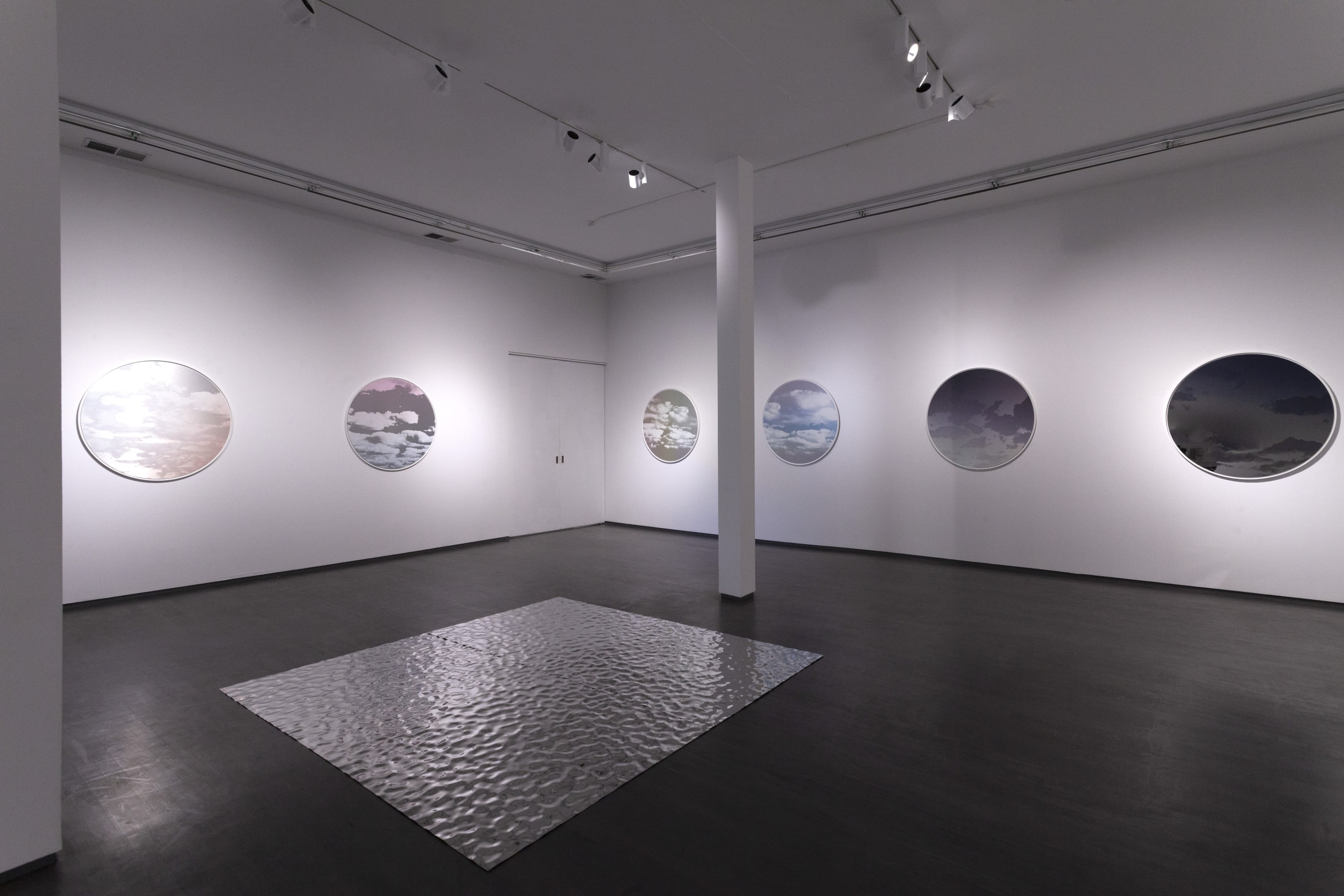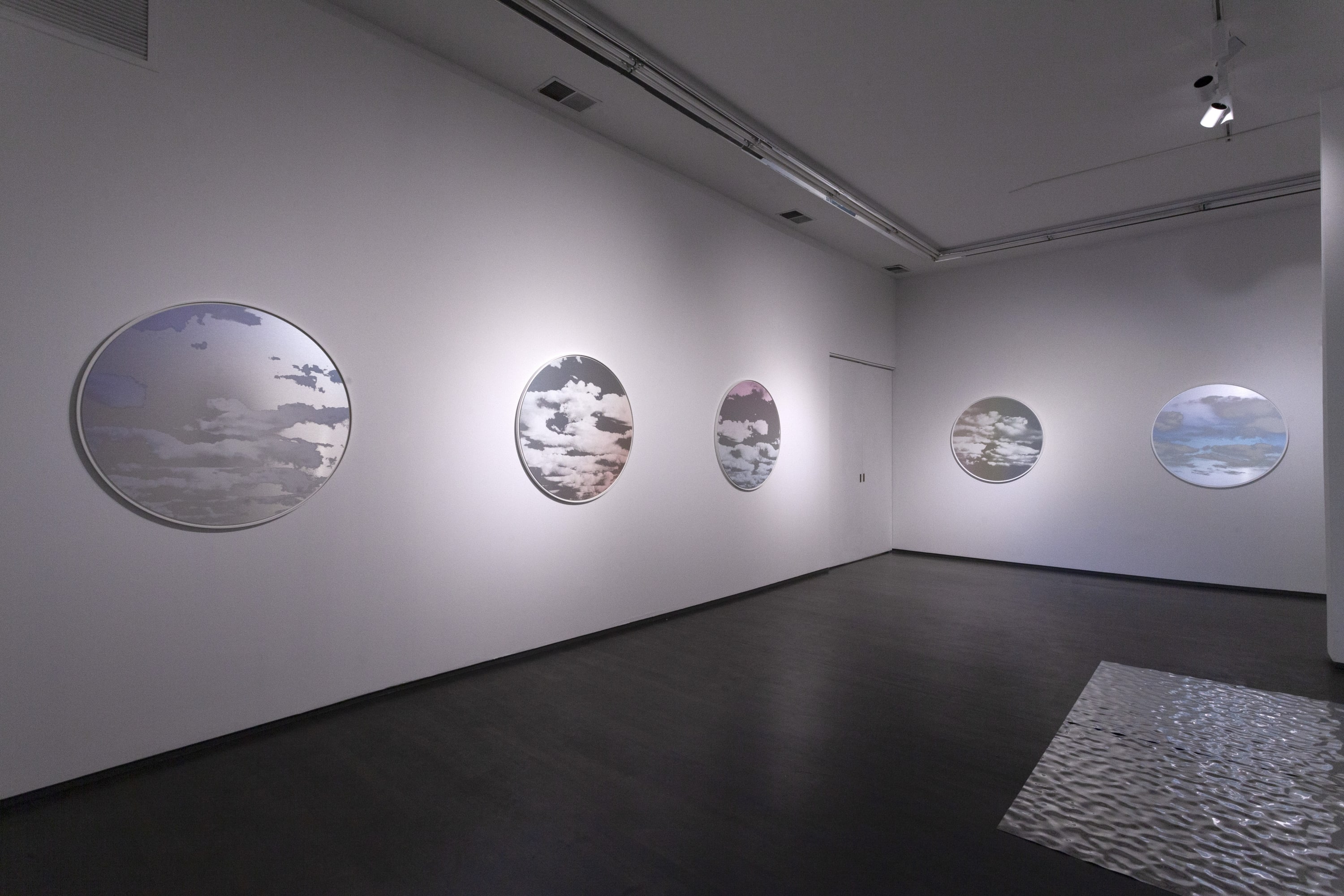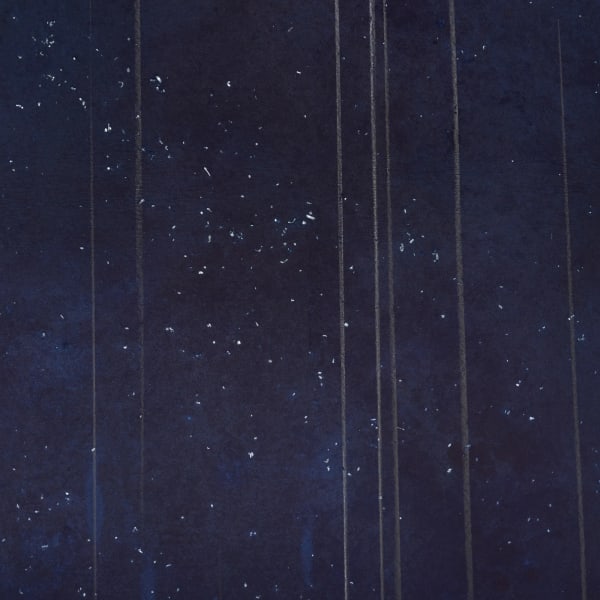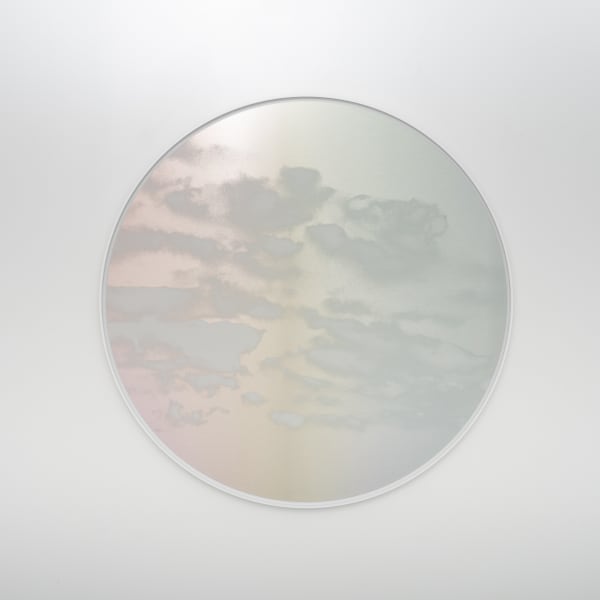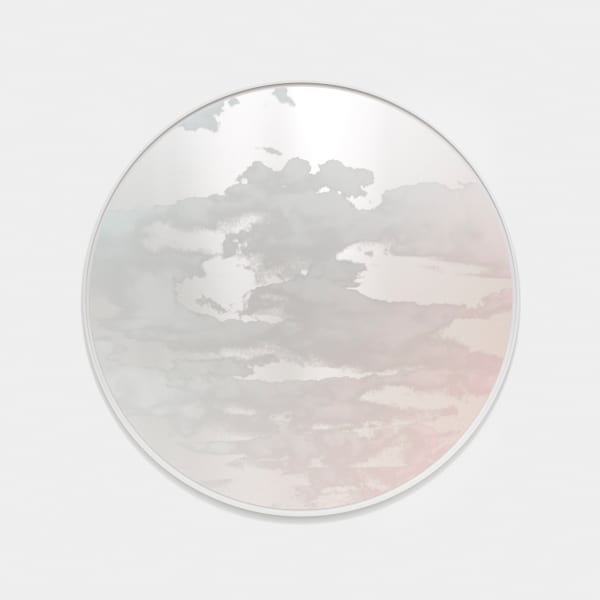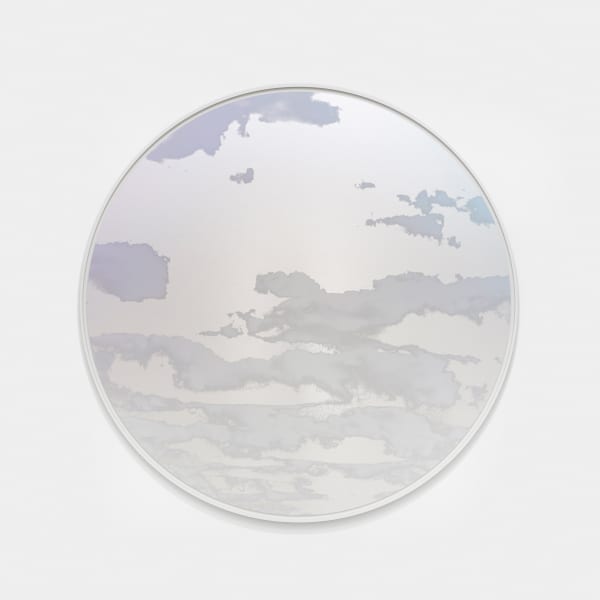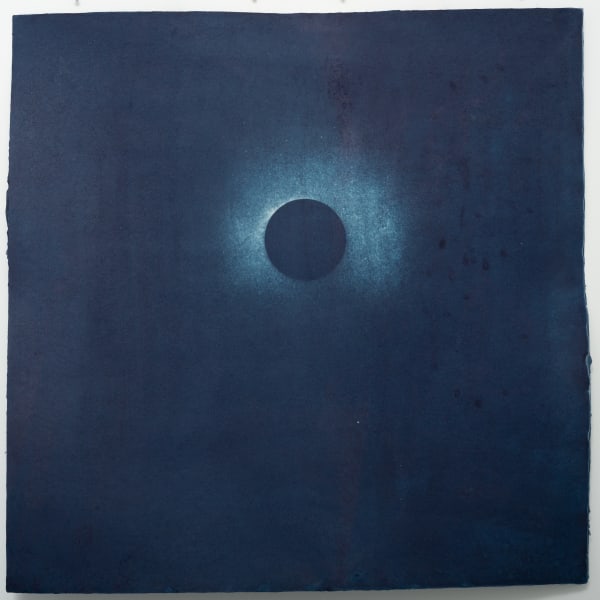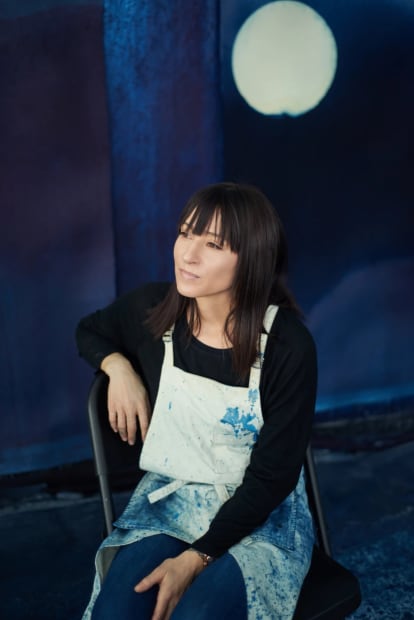-

-
-
“Something becomes more beautiful and sublime the more impermanent it is. There’s a psychological shift that occurs when one recognizes the pathos of falling cherry blossoms, or the moon going through phases, or a passing cloud.”
–Miya Ando
-
Kavi Gupta presents Kumoji (Cloud Path / A Road Traversed By Birds And The Moon), a solo exhibition of new paintings by Miya Ando. Expressive of the transitory and immaterial quality of clouds at night, the exhibition spotlights nature’s impermanence and interdependence, concepts also prevalent in Ando’s recent solo exhibitions at the Noguchi Museum, Queens, NY; Katzen Arts Center, Washington DC; and Asia Society Texas Center, Houston, TX; and her recent group exhibitions at Crystal Bridges Museum of American Art (with Marina Abramović, Marilyn Minter, Ólafur Eliasson, and Ai Weiwei); Smithsonian American Art Museum, Washington, DC; and Los Angeles County Museum of Art (LACMA).
-

-
Ando lived her formative years between a Buddhist temple in Japan and the mountains of Northern California. The unique vantage point expressed in Kumoji (Cloud Path / A Road Traversed By Birds And The Moon) reflects her experiences as an artist occupying the margins between Japanese and Western culture.Ando’s circular night cloud paintings read like memories—never static, fluctuating endlessly depending on the position of the viewer and the available light. Based on actual night clouds Ando photographed in a variety of locations over the past three years, their ephemeral qualities illustrate the sentiment behind the Japanese phrase “mono no aware,” roughly translated as “the pathos of things.” Beauty fades; strength dissolves into frailty. Everything follows this rule; it is the vernacular of nature.
-

-
“I char the wood because it dematerializes the object. The silver nitrate creates a mirror. It becomes like water. A reflection is there and not there; it is material and immaterial.”
-

-
Kuu, a large-scale, three-panel painting made from reclaimed redwood and silver nitrate, borrows its name from a Japanese word of particular importance to Buddhism, which holds multiple meanings, including sky, void, and emptiness. To create this work, Ando first charred the redwood using a traditional Japanese fireproofing technique called shou sugi ban which requires burning the surface to protect the inner layers of wood from future damage.
-

-
The overlap of emptiness and substance is further elucidated in Mizukagami (Water Mirror, or The Shadow Of The Moon Reflected In Water), a hammered steel floor sculpture that evokes the fugitive phenomenon of the moon reflecting on the surface of a pond. Like so many of Ando’s paintings, and like the moon itself, this sculpture seems to emit light despite lacking any source of illumination—a momentary articulation of both presence and absence.“When you see the moon you see the light of the sun,” Ando says. “That reflected light is reflected again when you see the moon on water.”
-

-
Most ephemeral, perhaps, of all of the bodies of work featured in Kumoji (Cloud Path / A Road Traversed By Birds And The Moon) is Ando’s new series of paintings depicting stars, rain, and the phases of the moon, made with natural indigo dye and pure silver powder on mulberry paper. As Ando notes, “Indigo is like a little clock of coloration. The longer it touches a surface, the deeper and darker blue the surface becomes.”Like the temporary carriers of yesterday’s light they depict, these paintings memorialize and measure that most fleeting of natural phenomena—the passage of time.
-

-
INDIVIDUAL WORKS
-
Painted with ink on metal, these tondos by Miya Ando captures the ephemeral, transient experience of watching night clouds as they cover and uncover moonlight. The date stamps in the titles illustrate the exact time and date that Ando observed the clouds on which she based the paintings. As the titles indicate, the Japanese word “unkai” literally translates into “sea of clouds.” Another Japanese word, "mugetsu," meaning invisible moon, describes another idea that supports the series—that of the simultaneous ethereality and reliable return of the phases of the moon. In the lunar calendar, the brightest full moon comes on the 15th day of the 8th month. Mugetsu specifically describes the experience of clouds obscuring the moon on that particular night. A practicing Buddhist, Ando works a lot with natural phenomena such as clouds and light to express the idea of impermanence. In this series, even though the moon is not visible, its presence is still an essential part of the work. The image is painted on metal, a material Ando appreciates for its ability to reflect light under constantly changing conditions. The strength and permanence of the material is juxtaposed by the ephemerality of the subject matter.
-
-
 Miya Ando, Kumoriyo (A Night When The Sky Is Thick With Clouds And No Moon Or Stars Can Be Seen) April 30 10:00 PM NYC, 2022
Miya Ando, Kumoriyo (A Night When The Sky Is Thick With Clouds And No Moon Or Stars Can Be Seen) April 30 10:00 PM NYC, 2022 -
 Miya Ando, Kumoriyo (A Night When The Sky Is Thick With Clouds And No Moon Or Stars Can Be Seen) July 1 11:21 PM Santa Cruz, 2022
Miya Ando, Kumoriyo (A Night When The Sky Is Thick With Clouds And No Moon Or Stars Can Be Seen) July 1 11:21 PM Santa Cruz, 2022 -
 Miya Ando, Kumoriyo (A Night When The Sky Is Thick With Clouds And No Moon Or Stars Can Be Seen) July 5 Midnight NYC, 2022
Miya Ando, Kumoriyo (A Night When The Sky Is Thick With Clouds And No Moon Or Stars Can Be Seen) July 5 Midnight NYC, 2022 -
 Miya Ando, Kumoriyo (A Night When The Sky Is Thick With Clouds And No Moon Or Stars Can Be Seen) June 25 9:52 PM NYC, 2022
Miya Ando, Kumoriyo (A Night When The Sky Is Thick With Clouds And No Moon Or Stars Can Be Seen) June 25 9:52 PM NYC, 2022
-
-
These works by Ando belong to a series of Night Cloud tondos Ando created for Kumoji (Cloud Path / A Road Traversed By Birds And The Moon). These paintings depict actual night clouds that Ando witnessed at the time and place noted in the paintings' titles. The images are ethereal as they change as the available light changes, and as a viewer walks around them. In addition to her interest in the ephemeral aspects of nature and art, Ando is also fascinated with the transitory and ever changing character of language. A dual Japanese American citizen, she seeks out words that exist in Japanese that have no simple English equivalent. Often these are archaic words that have even fallen out of fashion in Japan, but which, she says, “express a philosophy of existence and a relationship to nature.” The titles of these works are examples of these terms, which Ando has done her best to translate into English, and into physical form through the work.
-
This large-scale, three-panel painting is made from reclaimed redwood and silver nitrate. It represents the culmination of a long-running series in which Ando has been experimenting with a traditional Japanese fireproofing technique called shou sugi ban which requires burning the surface of wood to protect the inner layers from future damage. “I char the wood because it dematerializes the object,” she says. “The silver nitrate creates a mirror. It becomes like water. A reflection is there and not there; it is material and immaterial.” This piece borrows its name from a Japanese word of particular importance to Buddhism, which, as is implied by the title of the work, holds multiple meanings. Of particular interest to Ando is the meaning of Kuu as a term for emptiness as one of the five elements—Godai (五大, lit. "five – great, large, physical, form") are the five elements in Japanese Buddhist thought of earth (chi), water (sui), fire (ka), wind (fu), and void (ku).
-
Mizukagami (Water Mirror, or The Shadow Of The Moon Reflected In Water) is a hammered steel floor sculpture. Evocative of the fugitive phenomenon of the moon reflecting on the surface of a pond, the piece is expressive of the overlap of emptiness and substance. Like so many of Ando’s paintings, and like the moon itself, this sculpture seems to emit light despite lacking any source of illumination—a momentary articulation of both presence and absence. “When you see the moon you see the light of the sun,” Ando says. “That reflected light is reflected again when you see the moon on water.”
-
 Photo by Roy Ritchie.
Photo by Roy Ritchie.



